We live in a world of comparison—brought to you by human nature and the convenient oversharing nature of the interwebs.
The impulse to compare is so addicting because it plays on our basal needs to identify our competition and strategize how to be better. There are times when a comparison is damaging, of course (insert image of photoshopped model, the dangers of social media article, etc.). But despite the stigma, it does inspire people to push their limits to win.
Comparison, while hurtful for pubescent teens, is instrumental for B2B organizations. There’s the obvious reason: You have literal competition to battle—and defeat. And, even if you don’t have precise overlaps with another business’s offering, if your audience overlaps, you’re competing for attention in a noisy marketplace.
In a world where 70%* of B2B buyers fully define their needs before engaging with sales, your marketing efforts can’t trick anyone about your offering. So, what exactly is marketing’s responsibility to the buyer?
Providing an exceptional CX during the self-education stage (which, according to that last stat, is most of the journey).
81%** of marketing leaders agree: Customer experience is the battleground on which companies will fight for business. Which makes content, A.K.A. the backbone of virtually every customer and prospect interaction, instrumental in providing a winning CX compared to your competition.
So, as you walk onto the field with your competition, it’s natural to do a once-over to assess the value of their content versus yours. And, ever fans of concrete values over wishy-washy, we’ve defined the five stages of content operations maturity.
The Content Operations Maturity Model
As you read about this maturity model, there are three key things you should be thinking about:
- Where do I think my operation stands on this scale?
- What would my colleagues say?
- What would our competitors say?
Each and every one of these questions is important. And, while you probably can’t get the definitive answer for number three, numbers one and two are fair game. In fact, do you want to be sure of your stage before reading about all three?
Take the Content Operations Self-Assessment and get your customized evaluation.
Now, let’s get to the maturity model:
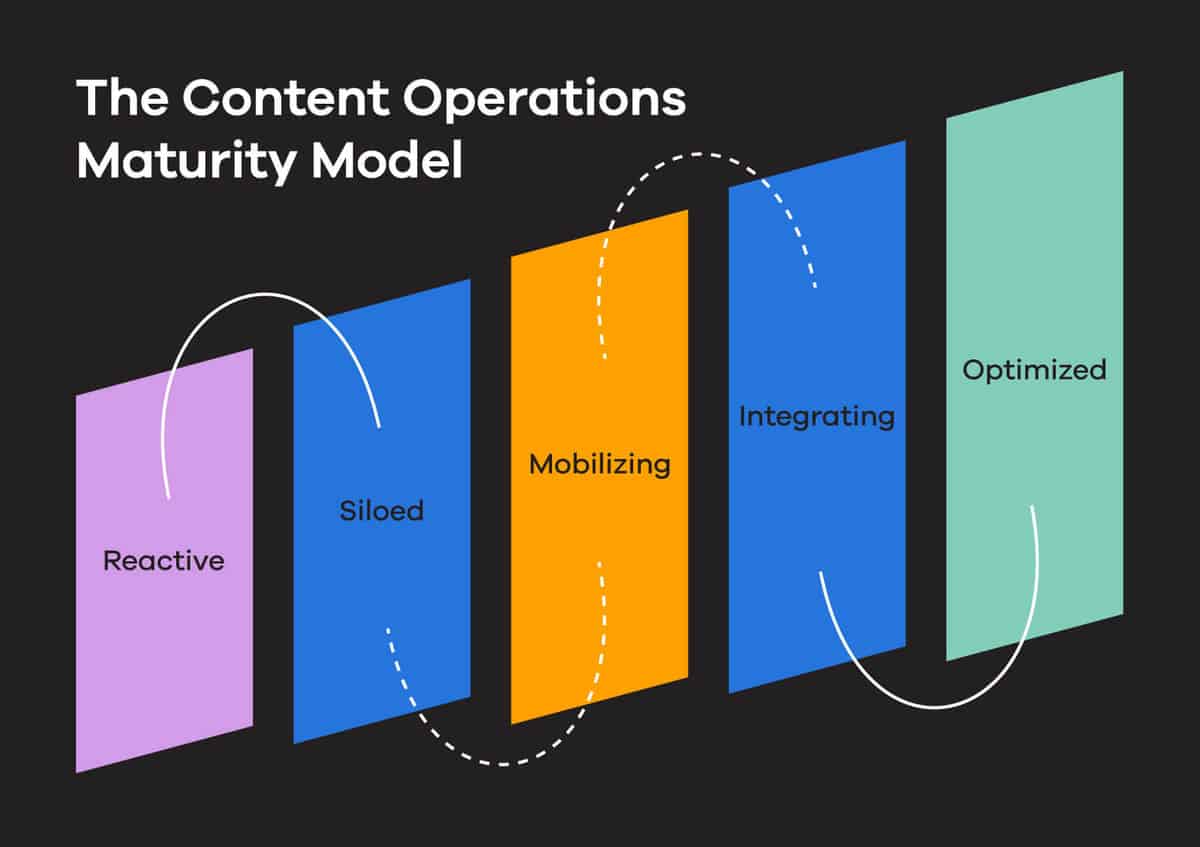
1. Reactive
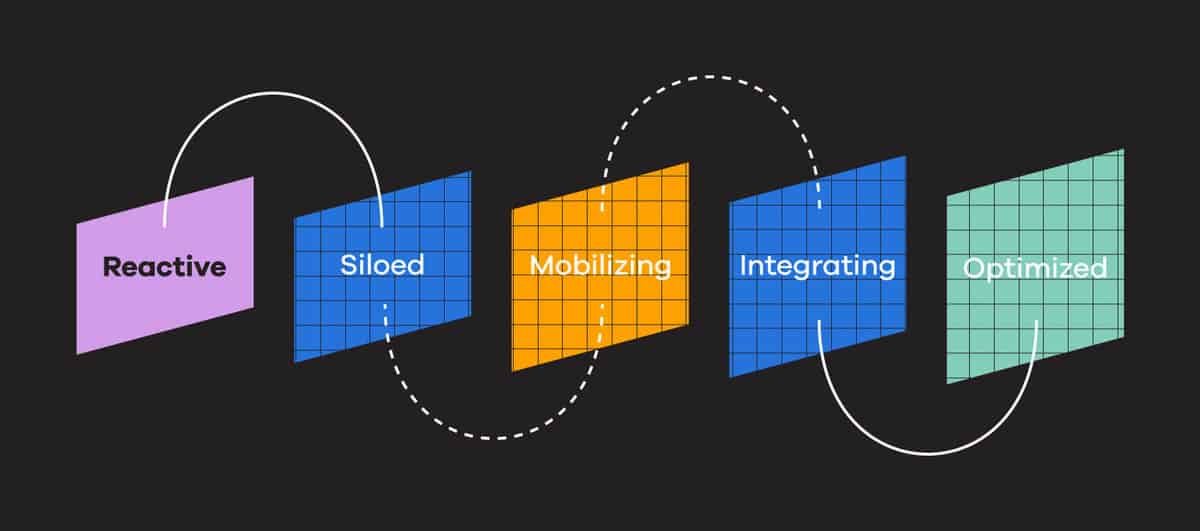
From our preliminary research, we estimate 15% of organizations to be in the Reactive stage. This stage is categorized as:
- Chaotic
- Siloed
- Ad hoc
- Constantly behind
- Lacking a clear strategy
Key characteristics:
- Pockets of greatness keep teams and marketing strategies afloat.
- Content is not planned strategically and ad hoc requests dominate marketing’s workload.
- Undefined collaboration processes and responsibilities lead to siloed work.
- Content lacks a clear and unifying message across all channels.
- Content is not maintained in a central location for easy access, resulting in wasted time searching for assets.
2. Siloed
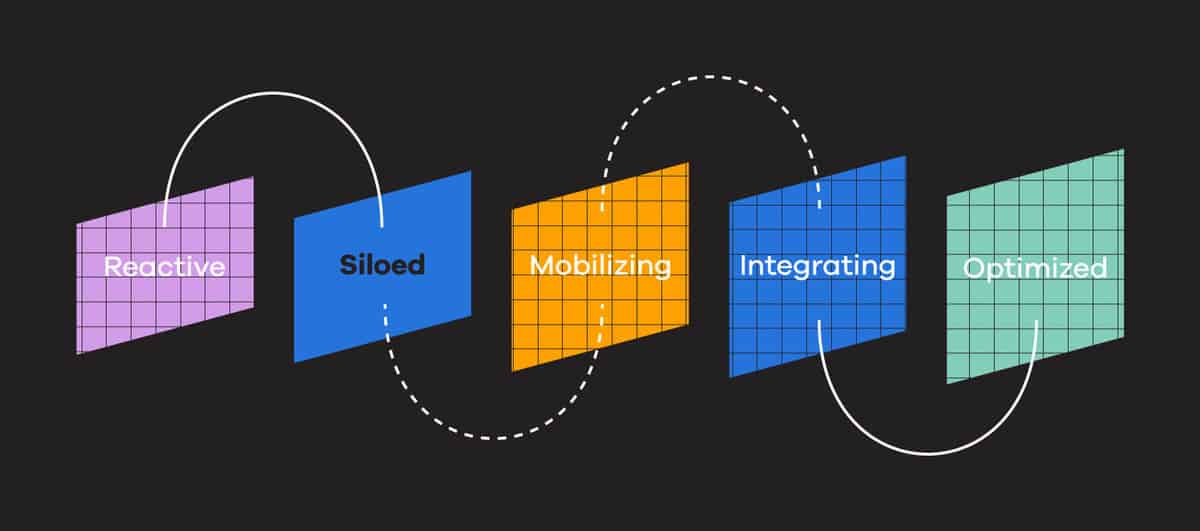
Approximately 34% of organizations fall in the Siloed stage, and the name pretty accurately captures the feeling of being within a siloed content operation. Teams within this stage categorized their operation as:
- Experimental
- Ad hoc
- Chaotic
- Subject to disjointed process
Key characteristics:
- Individuals are confident in their own roles, but struggle to cross-functionally collaborate.
- Your organization has a defined process for incorporating input from customer-facing teams into planning for marketing initiatives.
- Goals for marketing initiatives are not well defined, and marketing’s contribution to business outcomes is not consistently measured.
- The lack of a common taxonomy across content assets and teams makes searching, publishing, and reporting difficult.
- Customers receive disparate messages across digital and in-person channels, creating a disjointed customer experience.
- Poor visibility into project status results in wasted time and inefficient communication.
3. Mobilizing

35% of the organizations we’ve surveyed fall in the Mobilizing stage. This stage is categorized as:
- Deliberate and intentional
- Collaborative
- In need of improved visibility and alignment
- Inconsistent in measuring impact
Key characteristics:
- High-performing content teams solicit buy-in from other areas of your organization to improve collaboration and deliver a cohesive message.
- It’s a challenge to consolidate and apply a universal or strategic taxonomy to gain meaningful reporting and insights.
- Content is accessible from a central location but is often outdated or difficult for customer-facing teams to find.
- Content strategy is well defined but ad hoc escalations interfere with execution.
- Content is created to support personas, buying stages, and key themes, but not always leveraged in alignment with marketing’s intended strategy.
4. Integrating
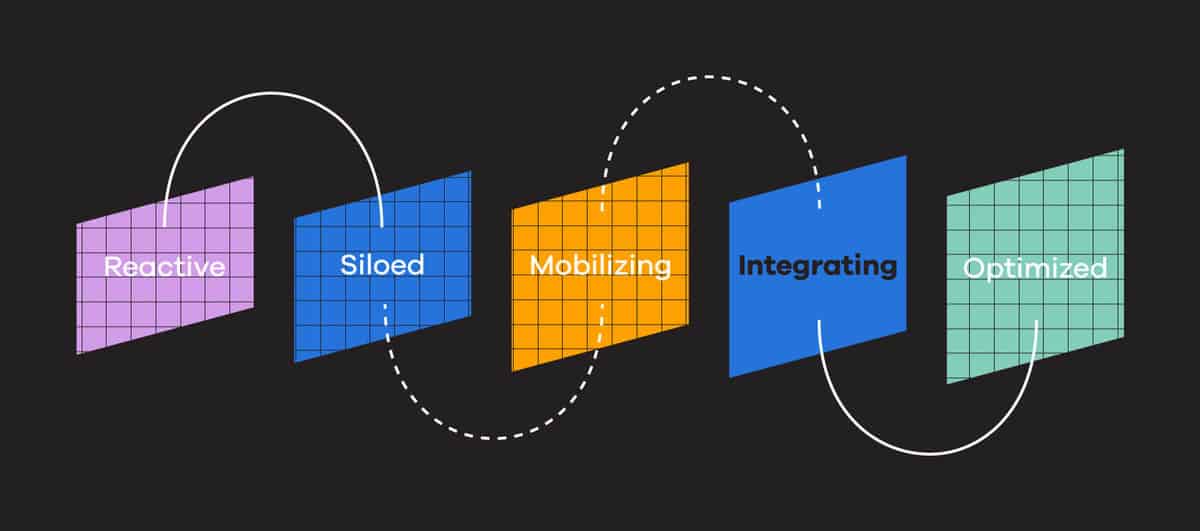
Second best has it pretty good—but not many have reached this high on the maturity model. 12% of surveyed organizations are classified as Integrating, which can be identified as:
- Strategic and proactive
- Aligned across teams
- Cohesive messaging across channels
- Data-driven
- Improving the ability to quantify impact
Key characteristics:
- It’s challenging to consolidate and apply a universal taxonomy to gain meaningful reporting and insights.
- Cross-team collaboration is effective, and marketing and sales teams operate in alignment to deliver a consistent message.
- Marketing excels at strategic planning but may not fully leverage existing assets for repurposing or further content personalization.
- Marketing budgets are increasingly dedicated to MarTech investments, but expensive tools underperform without personalized content.
- Your organization has content performance data but is struggling to use disparate metrics to understand content ROI.
5. Optimized
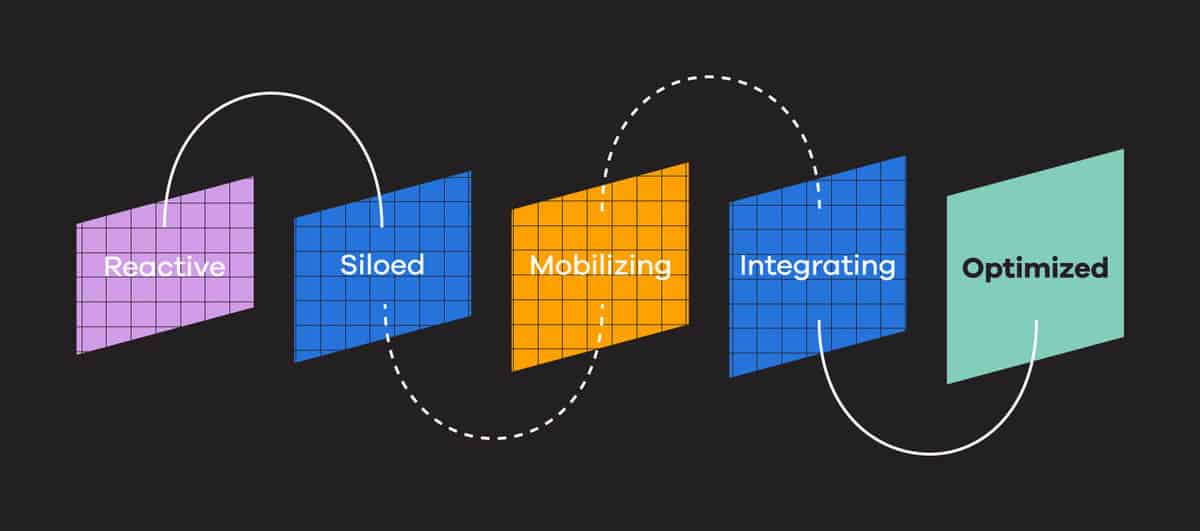
Content nirvana, you might call it. Organizations that fall in the Optimized stage are in the top 3% of all companies we’ve surveyed. This stage is categorized as:
- Proactive
- Strategic
- Impactful
- Best in class
- Adaptive
Key traits:
- Cohesive, cross-team collaboration delivers a highly effective and consistent message.
- A strategic taxonomy supports asset findability and reporting within an organized and up-to-date content inventory.
- Content impact and ROI are consistently measured and provide a solid foundation for future strategic planning.
- Executive-level turnover can cause major disruptions in marketing’s ability to effectively execute on a targeted, focused strategy.
- Your MarTech stack provides wide coverage of capabilities, but may not be optimized to support marketing goals.
What to Do with Your Maturity Score
So—what score would you give yourself? If you’ve taken the Content Operations Self-Assessment, you already have the unbiased answer. If not, now’s the time to compare what you think you are to your actual evaluation.
Once you have the results, you’ll be able to download recommended reading, next steps, and even a deck of cards that helps you talk about barriers to success with your entire team. Think Cards Against Humanity, but for starting hard conversations that mobilize your content operation (just as fun, I know).
Most importantly, send it to your colleagues. Comparison within your own team can reveal hidden realities that need to be acknowledged.
If you’re feeling particularly bold, send the assessment to your competition. Think of the throw down you could have:
“We got Integrating—I bet you guys don’t even get past Siloed with all those typos in your last launch.”
(Disclaimer: I do not take responsibility for any passive aggressive email wars that ensue.)
*csoinsights.com
**chiefmarketer.com

